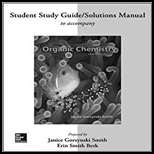
Concept explainers
(a)
Interpretation: The given compounds are to be arranged in order of increasing basicity.
Concept introduction: According to Lewis acid-base theory, the compounds which can donate its lone pair of electron are termed as bases and the electron acceptors are known as acids.
(b)
Interpretation: The given compounds are to be arranged in order of increasing basicity.
Concept introduction: According to Lewis acid-base theory, the compounds which can donate its lone pair of electron are termed as bases and the electron acceptors are known as acids. Amines act like a base as the nitrogen atom contains one lone pair of electrons.
(c)
Interpretation: The given compounds are to be arranged in order of increasing basicity.
Concept introduction: According to Lewis acid-base theory, the compounds which can donate its lone pair of electron are termed as bases and the electron acceptors are known as acids. Amines act like a base as the nitrogen atom contains one lone pair of electrons.
(d)
Interpretation: The given compounds are to be arranged in order of increasing basicity.
Concept introduction: According to Lewis acid-base theory, the compounds which can donate its lone pair of electron are termed as bases and the electron acceptors are known as acids. Amines act like a base as the nitrogen atom contains one lone pair of electrons.
Want to see the full answer?
Check out a sample textbook solution
Chapter 25 Solutions
ORGANIC CHEMISTRY-STUDY GDE...-W/ACCESS
- Rank the compounds in each group in order of increasing basicity.arrow_forwardThe order of increasing acidity is Phenol < meta-cyanophenol < ortho-cyanophenol 1.how about para-cyanophenol??does it has higher acidicity than both ortho-cyanophenol and meta cyanophenol or lower?? 2.why does ortho-cyanophenol have higher acidicity than meta cyanophenol?? 3. why doesmeta cyanophenol have higher acidicity than Phenolarrow_forwardRank the compounds in each group in order of increasing acidity.arrow_forward
 Organic Chemistry: A Guided InquiryChemistryISBN:9780618974122Author:Andrei StraumanisPublisher:Cengage Learning
Organic Chemistry: A Guided InquiryChemistryISBN:9780618974122Author:Andrei StraumanisPublisher:Cengage Learning
